Technologies
What a Fusion Energy Breakthrough Means for Green Power
Four times now, researchers have produced a fleeting burst of fusion energy, an encouraging sign for making this zero-carbon energy source a reality.
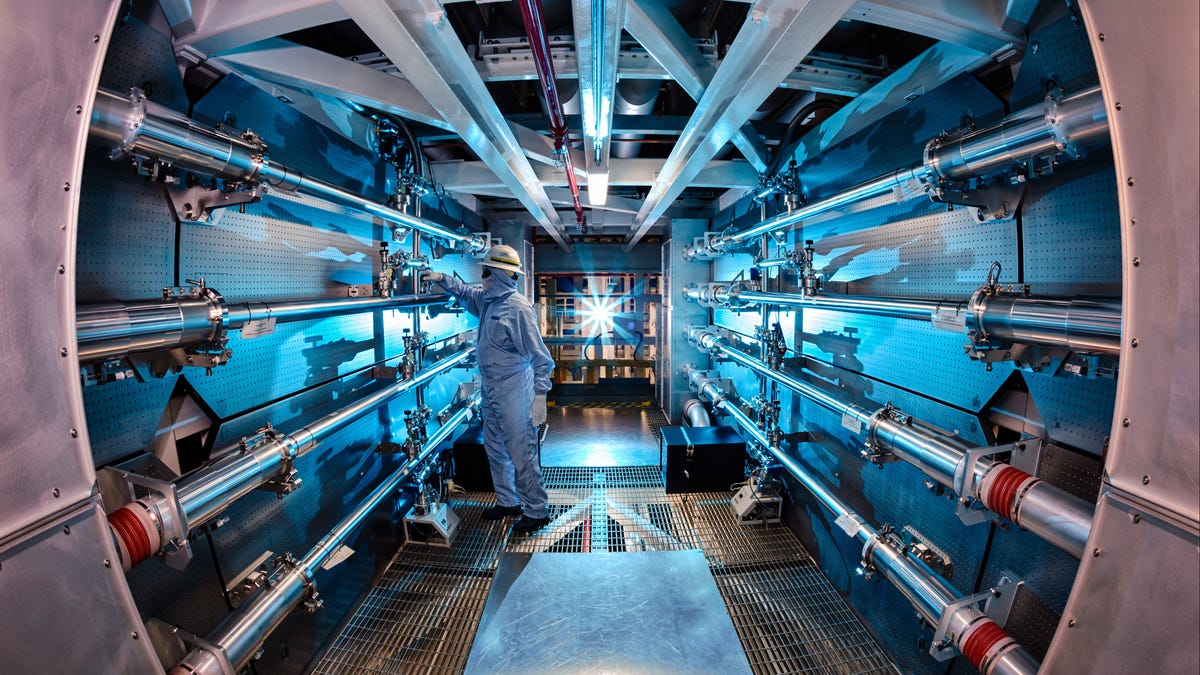
Scientists at Lawrence Livermore National Laboratory who achieved a major fusion milestone a year ago have repeated it three times more. Each experiment used 192 lasers to ignite a fusion reaction that for a fleeting moment produced more energy than was used to trigger it.
Fusion powers the sun, and humans reproduced the process more than 70 years ago to power thermonuclear weapons. The scientific and engineering challenges of a controlled fusion reaction, though, are formidable. The repeated successes by the scientists at LLNL’s National Ignition Facility, gradually increasing the laser power that causes a tiny fusion fuel pellet to implode, are important steps of progress toward sustained, controlled fusion.
«Higher laser energy can help achieve a more stable implosion, resulting in higher yields,» said Jean-Michel Di Nicola, a NIF leader, in a statement after the fourth fusion success on Oct. 30.
But what do the experiments mean for science and for the dream of a new energy source that would power our homes and cars without releasing any carbon dioxide?
In short, it’s fine to applaud the NIF achievements, but they don’t mean a green energy revolution is imminent. It’ll still be years before fusion power progress bears fruit — likely a decade or so — and it’s still not clear if fusion will ever be cheap enough to radically transform our power grid. Continuing today’s investments in solar and wind is critical to combating climate change.
Commercial fusion ventures applauded the NIF experiment and have made gradual progress since then. Commonwealth Fusion Systems opened a new headquarters in Devens, Massachusetts, where it’s building an experimental reactor designed to produce power. Tokamak Energy and General Fusion announced new facilities to be built near Oxford in the UK. Microsoft has agreed to buy fusion power from a Helion Energy plant called Constellation scheduled to go online in 2028. Other startups like Zap Energy and TAE Technologies are touting progress, too.
Here’s a look at what’s happened and what’s still to come.
What is fusion?
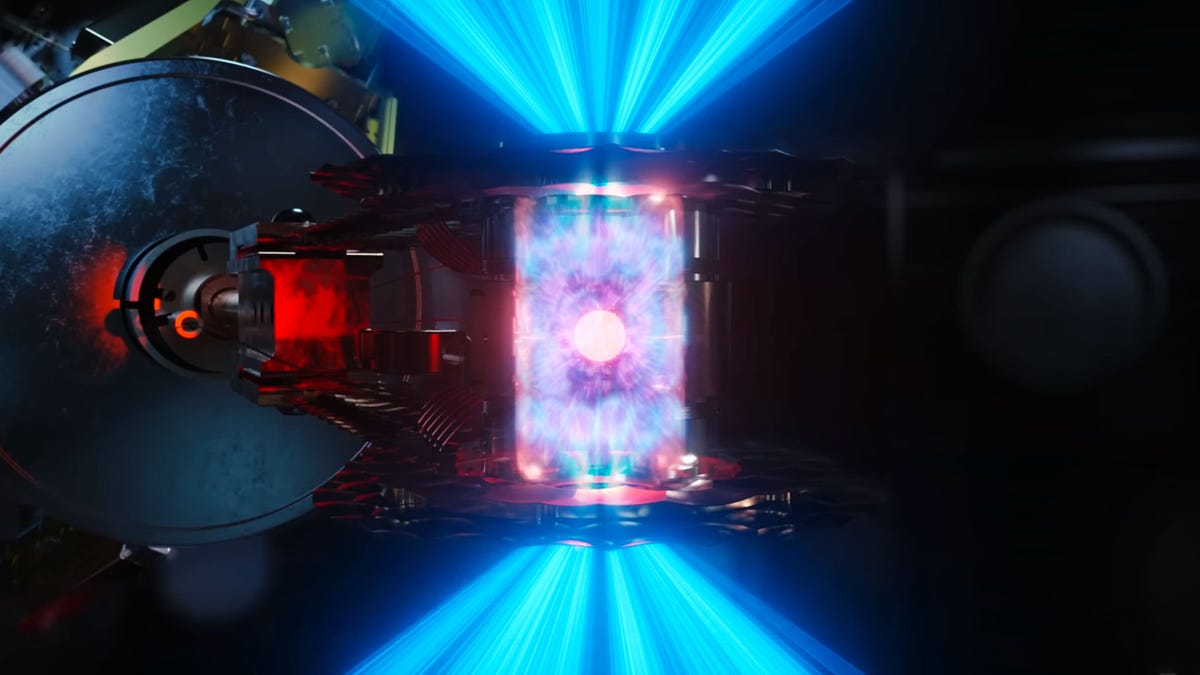
Fusion occurs when two lighter elements like hydrogen or helium merge into a single, heavier element. This nuclear reaction releases a lot of energy, as exhibited by the biggest fusion furnace around, the sun.
It’s harder to get fusion to occur on Earth, though, because atomic nuclei are positively charged and therefore repel each other. The sun’s enormous mass produces tremendous pressure that overcomes that repulsion, but on Earth, other forces are required.
Two general approaches to squeeze atoms together and produce fusion are called inertial and magnetic confinement. Inertial confinement usually uses lasers to zap a pellet with a lot of power, triggering an explosion that compresses the fusion fuel. That’s the method NIF uses.
The other approach uses magnetic fields. It’s more widespread among companies trying to commercialize fusion energy.
What did the experiment at NIF accomplish?
In December 2022, a NIF experiment crossed a critical threshold for fusion where the energy that the fusion reaction generated — 3.15 million joules — exceeded the 2.05 megajoules from the lasers to trigger the reaction. Because much more energy is required to run the lasers, though, the reaction overall is highly inefficient.
Fusion researchers denote the ratio of output energy to input energy with the letter Q, and the December 2022 reaction was the first time a fusion reaction surpassed Q = 1. On July 20, Oct. 8 and Oct. 30 of this year, NIF repeated its success in which Q was greater than 1. The Oct. 30 experiment used a record amount of laser power, 2.2 megajoules, an improvement that’s difficult since the lasers can destroy the optical equipment that guide their light.
«It’s all about the control of the damage,» said NIF operations leader Bruno Van Wonterghem in a statement. «Too much energy without proper protection, and your optics blow to pieces.»
Fusion reactors will have to reach a threshold of Q = 10 before energy generation is practical. That’s what everybody is aiming for, including another massive government-funded project called ITER in France. And fusion reactors will have to reach Q = 10 much more frequently than NIF can.
In some ways, these are academic milestones, which fusion experiments have nudged toward for decades. But given fusion’s reputation for not ever getting there, it’s an important proof of what’s possible. Think a little bit more carefully before you repeat that oft-quoted snarky remark that fusion is the energy source of the future and always will be.
What does the NIF experiment mean for green power?
Not a huge amount, for a few reasons. For one thing, most commercial fusion energy projects are using various forms of magnetic confinement, not NIF’s laser-based approach, so the engineering challenges are different. For another, NIF is a gargantuan, $3.5 billion national lab project funded to research nuclear weapons, not a project designed to produce reliable energy for the grid at the most competitive cost.
«Don’t expect future fusion plants to look anything like NIF,» said Princeton researcher Wilson Ricks in a post on X, formerly Twitter. Huge inefficiencies in NIF’s lasers and in the conversion of fusion heat to electrical power mean its design is inherently impractical. In comparison, «magnetic confinement fusion holds some real promise,» Ricks tweeted.
Lowering fusion’s cost is critical to its success since it’ll have to compete against zero-carbon alternatives like today’s fission-based nuclear reactors that can generate a steady supply of power and renewables like wind and solar that are cheaper but intermittent.
«Fusion’s first competitor is fission,» researchers at the Princeton Plasma Physics Laboratory concluded in an October research paper, not yet peer reviewed, that assesses fusion’s prospects on the electrical grid. They expect that if fusion’s high costs can come down enough, it could replace the need for future fission plants, and if lowered further, could also compete against the combination of solar and energy storage.
NIF is a big, complicated site. If fusion power plants can be built in cheaper, smaller units that are more like something coming off a factory line, production costs should decrease. That’s thanks to a phenomenon called Wright’s Law, the experience curve or the learning curve, which has steadily lowered costs for solar and wind. The bigger and more customized a fusion plant is, the less costs will drop and the less competitive fusion will be.
Are there some less direct benefits from NIF’s results?
Yes. Scientists could benefit somewhat from the NIF experiment by updating fusion physics models to account for the fact that it’s supplying its own heat instead of relying on external sources, said Andrew Holland, chief executive of the Fusion Industry Association, an advocacy group for the industry.
And the attention could help, too, especially given longrunning skepticism about fusion energy.
TAE Technologies CEO Michl Binderbauer called NIF’s result «a huge stepping stone into the dawn of the fusion age,» and said it’s an important illustration that fusion energy really is plausible.
Investors have noticed, too. Downloads of the Fusion Industry Association’s annual report, which details the $4.8 billion in venture capital investments in fusion energy startups, increased tenfold after the first NIF achievement was announced, Holland said. Many of those requesting it are from investment firms, he added.
How does fusion work at NIF?
NIF triggers fusion using 192 powerful infrared lasers with a combined energy level of 4 megajoules — about the same as a two-ton truck traveling at 100 mph. That’s converted first into 2 megajoules of ultraviolet light, then into X-rays that strike a peppercorn-sized pellet of fusion fuel.
The intense X-rays cause the outer layer of the pellet to blow off explosively, compressing the pellet interior and triggering fusion. The heat from that fusion sustains the reaction until it runs out of fuel or becomes lopsided and falters.
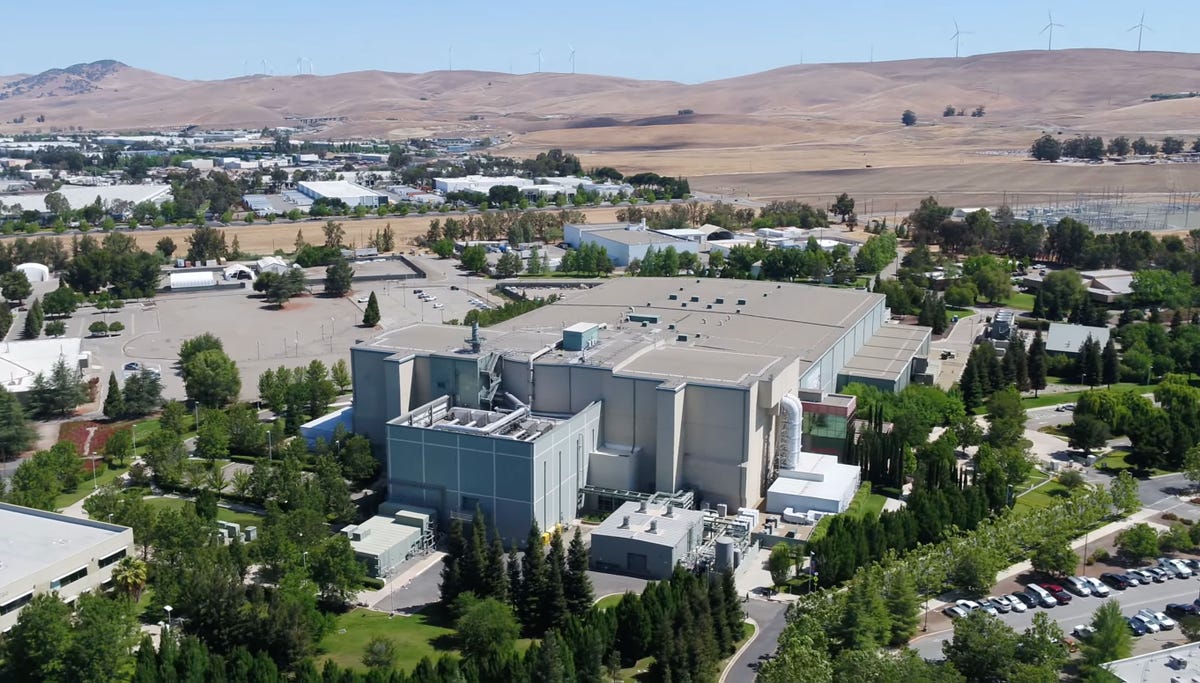
Nuclei? Hydrogen? Catch me up on atomic physics, please
Sure! Here’s a quick refresher.
Everything on Earth is made of tiny atoms, each consisting of a central nucleus and a cloud of negatively charged electrons. The nucleus is made of neutrons and positively charged protons. The more protons in the nucleus, the heavier the element is.
Hydrogen usually has one proton and one electron. An unusual variety called deuterium has a neutron, too, and using nuclear reactors or fusion reactors, you can make a third variety called tritium with two neutrons.
Chemical reactions, like iron rusting or wood burning, occur when those positive and electrical charges cause atoms to interact. In comparison, nuclear reactions occur when the nuclei of atoms split apart or join together. Here on Earth, it’s harder to marshal the required forces to get nuclear reactions to take place, which is why it’s easier to make a steam engine than a nuclear bomb.
When you heat atoms up enough, they get so energetic that the electrons are stripped loose. The resulting cloud of negatively charged electrons and positively charged nuclei is called a plasma, a more exotic state of matter than the solids, liquids and gases that we’re used to at room temperature here on Earth.
The sun is made of plasma, and fusion reactors need it, too, to get those hydrogen nuclei to bounce around energetically enough. A convenient property of plasmas is that their electrically charged particles can be manipulated with magnetic fields. That’s crucial to many fusion reactor designs.
What do you use for fusion fuel?
NIF and most other fusion projects use the two heavy versions of hydrogen, deuterium and tritium, called DT fuel. But there are other options, including hydrogen-boron and deuterium-helium-3, a form of helium with only one neutron instead of the more common two.
To get deuterium and tritium to fuse, you need to heat a plasma up to a whopping temperature of about 100 million degrees Celsius (180 million degrees Fahrenheit). Other reactions are even higher, for example about a billion degrees for hydrogen-boron fusion.
Deuterium can be filtered out of ordinary water, but tritium, which decays away radioactively over a few years, is harder to come by. It can be manufactured in nuclear reactors and, in principle, in future fusion reactors, too. Managing tritium is complex, though, because it’s used to boost nuclear weapon explosions and thus is carefully controlled.
How do you turn that fusion reaction into power?
The deuterium-tritium fusion reaction produces fast-moving solo neutrons. Their kinetic energy can be captured in a «blanket» of liquid that surrounds the fusion reactor chamber and heats up as the neutrons collide.
That heat is then transferred to water that boils and powers conventional steam turbines. That technology is well understood, but nobody has yet connected it to a fusion reactor. Indeed the first generation of fusion power reactors being built today are designed to exceed Q=1, but not to capture power. That’ll wait for the pilot plants that are expected to arrive in the next wave of development.
Is fusion work funded by the government or the private sector?
Both. NIF is funded by the US government’s nuclear weapons program. Government funding also pays for the Joint European Torus in the UK and ITER in France, both of which are more closely aligned with the goal of fusion energy generation.
But increasingly fusion energy is privately funded. Investors have poured $4.8 billion total into fusion energy startups, of which $2.8 billion arrived in the last year, according to the Fusion Industry Association’s annual report published earlier in 2022. Most of that went to Commonwealth Fusion Systems, a startup that spun out of MIT and raised more than $1.8 billion in a funding round in 2021.
The government is now helping the private sector, too. The US Energy Department in September 2022 announced a Milestone Program that provides up to $50 million to build fusion energy pilot plants. The Biden administration, a fusion proponent, said in November 2022 that fusion energy is one of five key approaches to halve carbon emissions by 2030 and reach net zero emissions by 2050.
«Uncle Sam is getting serious,» said Holland of the Fusion Industry Association. NIF’s achievement is «a pass-the-torch moment, where it goes from science and national labs to the commercial sector.»
How is fusion different from fission?
Fission, which powers today’s nuclear reactors, is the opposite of fusion. In fission, heavy elements like uranium split apart into lighter elements, releasing energy in the process.
Humans have been able to achieve fusion for decades with thermonuclear weapons. These designs slam material like uranium or plutonium together to trigger a fission explosion, and that provides the tremendous energy needed to initiate the secondary and more powerful fusion reaction.
In bombs, the process occurs in a fraction of a second, but for energy production, fusion must be controlled and sustained.
Do fusion reactors create radioactive waste?
Yes, generally, but it’s not nearly as troublesome as with fission reactors. For one thing, most of the radioactive emissions are short-lived alpha particles — helium nuclei with a pair of protons and a pair of neutrons — that are easily blocked. The fast-moving neutrons can collide with other materials and create other radioactive materials.
Fusion reactors’ neutron output generally will degrade components, requiring periodic replacement that could require downtime lasting perhaps a few months every few years. It’s vastly easier to handle than the high-level nuclear waste of fission power plants, though.
Hydrogen-boron fusion is harder to achieve than deuterium-tritium fusion, but part of its appeal is that it doesn’t produce any neutrons and attendant radioactive materials. The most prominent company pursuing this approach is TAE Technologies.
What are the safety risks of fusion power?
Fusion power plants don’t have the meltdown risks that have caused problems with fission reactors like the Fukushima and Chernobyl sites. When a fusion reaction goes awry, it just fizzles out.
But there still are significant operational issues that you’ll see at major industrial sites, including a lot of electrical power and high-pressure steam. In other words, the big problems are more like those you’d find at an industrial site than at one of today’s fission nuclear power plants.
So there are real advantages to fusion. NIF’s work helps show that there’s a future for fusion energy. But there’s still a very long way to go.
Technologies
Today’s NYT Mini Crossword Answers for Friday, Nov. 28
Here are the answers for The New York Times Mini Crossword for Nov. 28.
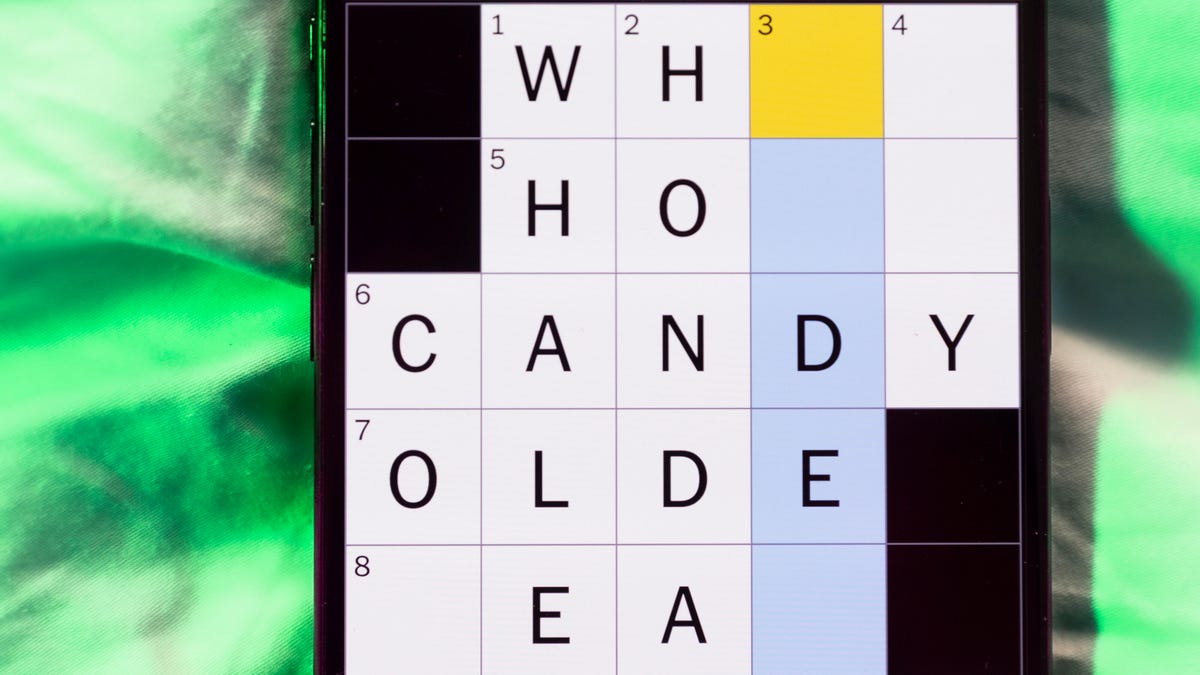
Looking for the most recent Mini Crossword answer? Click here for today’s Mini Crossword hints, as well as our daily answers and hints for The New York Times Wordle, Strands, Connections and Connections: Sports Edition puzzles.
Happy Black Friday — and that’s a fitting theme for today’s Mini Crossword. Read on for the answers. And if you could use some hints and guidance for daily solving, check out our Mini Crossword tips.
If you’re looking for today’s Wordle, Connections, Connections: Sports Edition and Strands answers, you can visit CNET’s NYT puzzle hints page.
Read more: Tips and Tricks for Solving The New York Times Mini Crossword
Let’s get to those Mini Crossword clues and answers.
Mini across clues and answers
1A clue: Major tech purchases on Black Friday
Answer: TVS
4A clue: Hit the mall
Answer: SHOP
5A clue: When many arrive at stores on Black Friday
Answer: EARLY
6A clue: «Buy one, get one ___»
Answer: FREE
7A clue: Clichéd holiday gift for dad
Answer: TIE
Mini down clues and answers
1D clue: Number of days that the first Thanksgiving feast lasted
Answer: THREE
2D clue: Small, mouselike rodent
Answer: VOLE
3D clue: Intelligence bureau worker
Answer: SPY
4D clue: Traditional garment worn at an Indian wedding
Answer: SARI
5D clue: Movement of money between accounts, for short
Answer: EFT
Don’t miss any of our unbiased tech content and lab-based reviews. Add CNET as a preferred Google source.
Technologies
Today’s NYT Connections: Sports Edition Hints and Answers for Nov. 28, #431
Here are hints and the answers for the NYT Connections: Sports Edition puzzle for Nov. 28, No. 431.
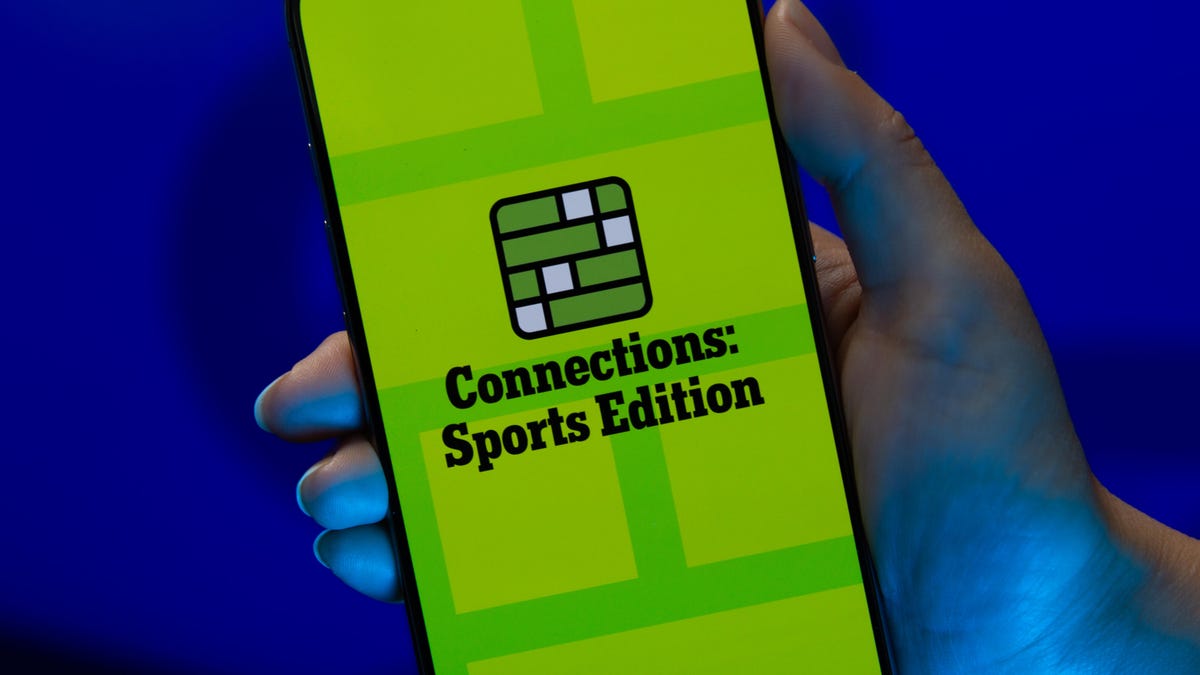
Looking for the most recent regular Connections answers? Click here for today’s Connections hints, as well as our daily answers and hints for The New York Times Mini Crossword, Wordle and Strands puzzles.
Today’s Connections: Sports Edition is a pretty tough one. If you’re struggling with today’s puzzle but still want to solve it, read on for hints and the answers.
Connections: Sports Edition is published by The Athletic, the subscription-based sports journalism site owned by The Times. It doesn’t appear in the NYT Games app, but it does in The Athletic’s own app. Or you can play it for free online.
Read more: NYT Connections: Sports Edition Puzzle Comes Out of Beta
Hints for today’s Connections: Sports Edition groups
Here are four hints for the groupings in today’s Connections: Sports Edition puzzle, ranked from the easiest yellow group to the tough (and sometimes bizarre) purple group.
Yellow group hint: Shoes.
Green group hint: Think Olympics.
Blue group hint: Kick the ball.
Purple group hint: Family affair.
Answers for today’s Connections: Sports Edition groups
Yellow group: Basketball sneaker brands.
Green group: First words of gymnastics apparatus.
Blue group: Women’s soccer stars.
Purple group: Basketball father/son combos.
Read more: Wordle Cheat Sheet: Here Are the Most Popular Letters Used in English Words
What are today’s Connections: Sports Edition answers?
The yellow words in today’s Connections
The theme is basketball sneaker brands. The four answers are Adidas, Jordan, Nike and Under Armour.
The green words in today’s Connections
The theme is first words of gymnastics apparatus. The four answers are balance, parallel, pommel and uneven.
The blue words in today’s Connections
The theme is women’s soccer stars. The four answers are Bonmatí, Girma, Marta and Rodman.
The purple words in today’s Connections
The theme is basketball father/son combos. The four answers are Barry, James, Pippen and Sabonis.
Technologies
I Love Using My Phone to Shoot Stunning Holiday Videos. Here’s How You Can, Too
These are my best tips for creating magical movies this festive season that you’ll cherish for years to come.
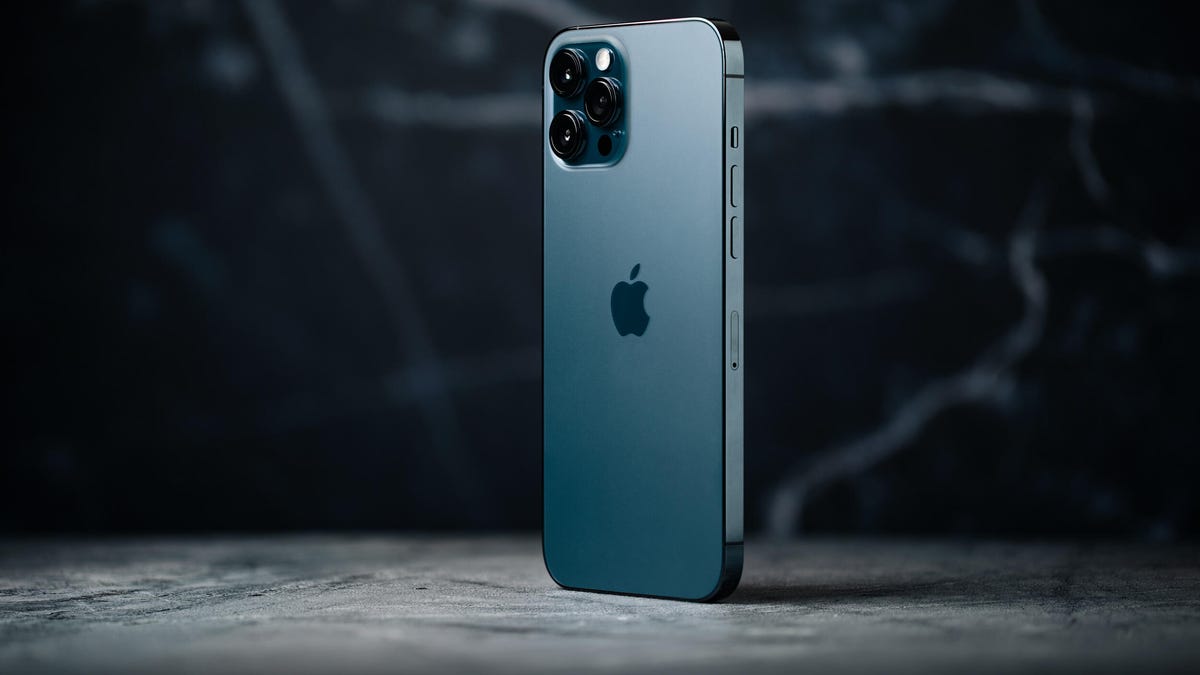
The iPhone 17 Pro is a superb video camera thanks to its glorious image quality, while its ease of use means it’s dead simple to quickly start shooting away. Then there’s the always fun 4K slow motion mode. Advances in mobile phone cameras mean It’s never been easier to shoot gorgeous footage of your family or your friends and the holidays are the perfect time to get creative with your videos. Don’t have an iPhone? Not to worry — other phones like the Samsung Galaxy S25 Ultra, Pixel 10 Pro or older iPhones and Android phones are also capable of capturing professional-looking video with very little effort on your part. But if you want to add some Hollywood flair to your videos, there’s a lot you can do to take things to the next level.
Read more: Best Camera Phones to Buy Right Now
It takes more than just a good camera to create videos you’ll want to watch again and again. You also need to know how to use that camera properly, how to capture the right moments and what makes for a good-looking shot. A creative eye and some planning will help too, taking you from a simple home video into something more inspiring that you’ll want to share with your family and watch again in years to come.
Don’t miss any of our unbiased tech content and lab-based reviews. Add CNET as a preferred Google source.
Here are my top tips that you should keep in mind when making your own family movies, whether you’re gathering for a holiday feast, journeying off to exotic lands on vacation or simply having some backyard drinks with friends.
1. Consider what you want your video to be
Before you start, you should give a bit of thought to what you want your video to include. While it could just be a full film of everything that happens over the holidays, or your child’s upcoming birthday, consider making it a bit more specific. Perhaps a video all about the games you play together, or them opening their presents.
Having a more focused story to tell — even a basic one — will help you consider what shots you’ll need to get, and it’ll help you shoot and edit only what you need, rather than having endless hours of footage to sift through. A Christmas day movie can be more straightforward as you’ll likely want to simply tell the story from the morning through to the drinking and games at the end of the day. Even so, try and consider how you can be selective and tell an interesting story rather than just filming every minute of the day you have together.
For my own festive-themed video (embedded above), I decided to show how I make my own hot mulled cider. By keeping it to a specific topic I was able to determine exactly the shots I needed and in what order, and even sketched out a storyboard of shots ahead of time. You don’t have to go that far, but having a rough idea in mind will help a great deal.
2. Set up your phone properly
Almost all recent smartphones can take great video, but it’s worth checking out the settings to make sure you’re ready to go. Your resolution settings are up to you, but full HD (1080p) is probably a good starting point, as it’ll look good but won’t fill up your phone’s storage too quickly. You can ramp it up to 4K if your phone allows it, or even drop it to 720p if you’re on an older device that won’t handle editing as well.
Read more: Best Camera Accessories for Your Phone
If you have an iPhone 14 Pro or later and plan on doing a lot of post-production on your footage in software like Adobe Premiere or DaVinci Resolve, you can consider shooting in Apple’s ProRes format. This gives you the best image quality, but the file sizes are immense, so if you want to keep things simple then it’s better to shoot in the standard video mode.
If you have the latest iPhone 17 Pro or previous iPhone 16 Pro you could take things further and shoot in Log. Log is a color profile that looks very low-contrast out of camera, but gives much more flexibility for adjusting the contrast, colors and overall look of the footage in post. Applying these edits is a process called color grading and it’s often what separates professional, Hollywood movies from everyday home videos. If you want to create a truly cinematic, professional look to your video, then shoot in Log and color grade your footage in DaVinci Resolve on your desktop or iPad.
It’s worth keeping an eye on your storage though, especially if you’re away from home for a while; you don’t want to fill up your space on the first two days of your trip only to have no room to capture the rest of the vacation. Those of you shooting ProRes Log on your iPhone 15, 16 or 17 Pro can now attach an SSD using USB-C for saving those huge files directly to external storage.
3. Keep your video clips short and sweet
While it’s easy to stand and film a five-minute clip of someone peeling potatoes for dinner, the reality is that when you watch that back, you’ll realize it’s way too long to remain interesting. Instead, consider keeping each clip to around 15-20 seconds in length. You might be surprised at how long 15 seconds of video actually seems like when you watch it back, and having lots of shorter clips cut together will give the video a more engaging, more professional feel.
If you’re walking up through a beautiful mountain trail, consider shooting 20 seconds of footage at 5- or 10-minute intervals — or only at particularly scenic viewpoints — rather than just filming the whole way up. But make sure you’re ready to capture interesting or funny moments as they happen as it’s these personal moments that you’ll enjoy looking back on down the line.
4. Stabilize your phone
There’s nothing that can ruin a video quite as easily as shaky hand-held footage. If your phone has a stabilized video mode, make sure it’s turned on. If not, consider using a small tripod to keep your phone steady. This of course also allows you, the filmmaker, to be involved in the action as well, which is great if you’re the one doing the cooking, or handing out presents.
You could even consider carrying a small mobile gimbal like the DJI OM 5. It allows you to get rock-steady footage even as you’re walking along, while the built-in selfie stick lets you film yourself more easily or capture more interesting angles for your footage than if you were just hand-holding your phone. If you’re interested in taking your mobile movie-making a bit more seriously then check out some of the best accessories you can pair with your phone to improve your footage.
5. Get creative with angles
A great way to improve the cinematic qualities in your film is to experiment with different angles. Say you’re capturing the moment your child takes a present from under the tree at Christmas — don’t just film them from your standing position nearby, but instead consider how you can capture that moment in a more exciting way. Perhaps even put the phone inside the tree, among the presents, so you see your child reaching toward the camera to retrieve their gift.
There’s no end to the ways you can play with your angles, so have a think about how you can shake things up. You can always try to reshoot certain things from multiple angles (or set up a spare phone or camera for another angle) and then cut them together in your video editor afterwards. In my video, for example, I wanted to show the cinnamon and ginger being thrown into the pot, so I used two angles: one from a first-person perspective looking into the pot, and another where I’d positioned my phone behind the pot to show me throwing the ingredients in. It’s little elements like this that can make a big difference overall.
6. Improve the audio and lighting
If your video will include people talking to the camera — perhaps your friends telling the camera where you are in the world or explaining how badly they’ll need a beer after the long hike — you’ll want to make sure your phone can capture that audio clearly. For the best results, consider buying a small external microphone like the Rode VideoMicro, which plugs into your phone’s power port, via an adapter, and will dramatically improve the sound quality.
Read more: Best Accessories for Better Video
If you don’t want to invest in extra gear there’s still a lot you can do to help. Turning off or at least lowering background music or closing the doors to drown out kitchen appliances will make a huge difference in how clear those voices can be captured. Outdoors, your biggest enemy for good audio will be the wind. There’s not always much you can do about it but at least trying to turn your back to the wind and providing a buffer between it and your phone will go some way to minimizing the problem.
Lighting is crucial too, and if you’re filming indoors in dimly lit spaces, then adding in your own light well help keep your footage looking good. I’ve outlined various LED light sources in my guide to video accessories, but one of my favorites for video production is the Zhiyun Fiveray FR100C light stick, which is easily hand-held and can produce any color you want, making it easy to get creative.
7. Experiment with slow motion and time lapses
Most recent phones have modes for taking slow motion video and for time lapses and both can be great tools for your video. Of course, it needs to make sense to use them — slow motion to slow down fast-paced action, and time lapse to speed up a long sequence.
In my mulled cider video, I used slow motion when lighting the stove to give a cinematic quality to the flames erupting, and I also slowed down the footage of me throwing ginger into the pot to get a great slow-mo effect on the cider splashing up. As it’s a short sequence it didn’t make a lot of sense to do a time lapse, but if you want to capture the whole process of making dinner, for example, a time lapse from high up in your kitchen, videoing you moving around over maybe a couple of hours would be a neat addition to a holiday film.
8. Edit your video
Once you have your video clips it’s time to piece them together. This can be the most challenging part, especially for those of you who are totally new to video production. Thankfully, there are easy ways of doing things.
Some phones, like the iPhones, as well as recent Samsung Galaxy phones, have built-in auto video makers that allow you to select some clips and automatically cut them together into a film, complete with background music and transitions between clips. They’re not always the most elegant of productions, but they’re worth keeping in mind if you’re a total beginner and just want a basic video put together to send to your family or friends.
Alternatively, look towards apps like BlackMagic’s DaVinci Resolve, which is free on the iPad (as well as on Mac or PC), with only some advanced features requiring a paid upgrade. It’s an incredibly well-rounded video editor that’s used by creative pros around the world and is renowned for its great tools for editing colors. For a more basic approach, look towards Quik by GoPro. It’s free and also lets you drop multiple video clips into a project for the app to automatically turn into a finished film. iPhone users will also be able to use Apple’s iMovie for free, which is an extremely easy-to-use video editor, with a variety of presets and styles available. Adobe Premiere Rush has a wide variety of editing tools and is built to be mobile friendly. It’s a great app, but it does cost $10 (£9, AU$15) a month, so it’s only worth considering if you think you’ll want to do more video production.
-

 Technologies3 года ago
Technologies3 года agoTech Companies Need to Be Held Accountable for Security, Experts Say
-

 Technologies3 года ago
Technologies3 года agoBest Handheld Game Console in 2023
-

 Technologies3 года ago
Technologies3 года agoTighten Up Your VR Game With the Best Head Straps for Quest 2
-

 Technologies4 года ago
Technologies4 года agoBlack Friday 2021: The best deals on TVs, headphones, kitchenware, and more
-

 Technologies4 года ago
Technologies4 года agoVerum, Wickr and Threema: next generation secured messengers
-

 Technologies4 года ago
Technologies4 года agoGoogle to require vaccinations as Silicon Valley rethinks return-to-office policies
-

 Technologies4 года ago
Technologies4 года agoOlivia Harlan Dekker for Verum Messenger
-

 Technologies4 года ago
Technologies4 года agoiPhone 13 event: How to watch Apple’s big announcement tomorrow
